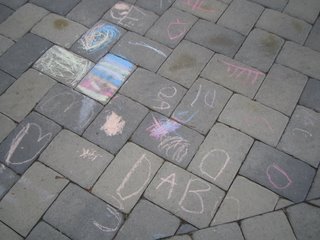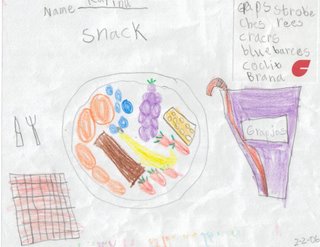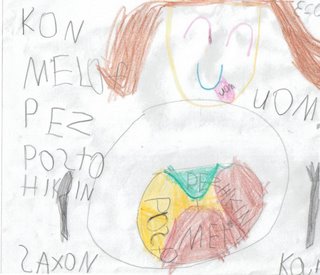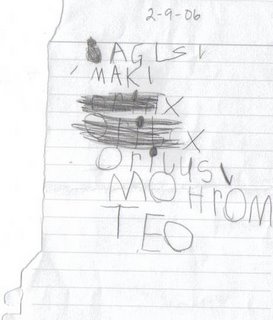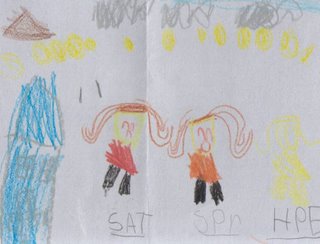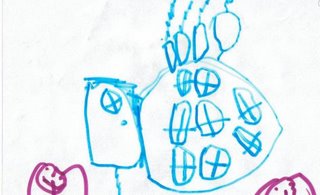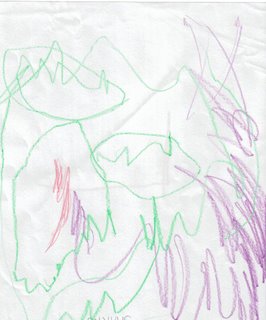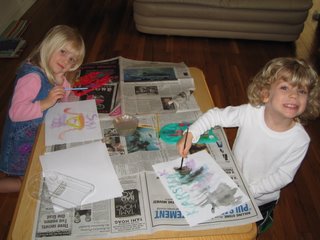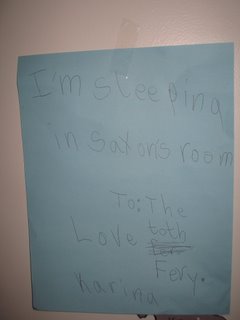Monday, October 30, 2006
Literacy Connections
We (teachers/parents/caregivers) need to actively engage children in meaningful experiences that teach literacy skills in context while building upon prior learning. Children need to be read aloud to daily and given opportunities to talk about, retell, reread, and discuss stories. We need to make it a priority to increase the experiences children have with and how they interact with a variety of print. Children must have the opportunity to play games with language, to sing songs and to recite poems and rhymes to increase linguistic awareness. Children should also learn alphabetic and phonemic principals, the knowledge that letters represent words and sounds, and that words are made up of small parts of sounds, in developmentally appropriate ways, without the use of drill and practice on isolated skills. All these things work together to ensure optimal development that prepare children for both writing and reading.
Interviewing Children on Writing Development
Adults tend to separate writing and drawing into two categories. The children I interviewed ranged in age from three to seven, and their responses varied when they were asked what a writer does. Some replied that writers write letters and numbers, or stories and poems, while yet others said they write pictures and rainbows. When young children first pick up a writing utensil, they usually begin to scribble. Gradually, form begins to take shape as the child sees that s/he can control the crayon/pencil. According to the website Stages of Writing based on Richard Gentry’s work, the stages of writing usually progress from scribbling to letter-like symbols, then strings of letters before beginning sounds emerge, followed by consonants representing words, then initial, middle and final sounds, transitional phases and standard spelling (retrieved April 18, 2006). As one seven year old I interviewed succinctly put it, her writing followed these stages: “When I was one I scribbled. When I was two, I drew faces. When I was three and four, I did pretend writing. When I was five, I wrote two or three letter words. When I was six, I began to write sentences, and now that I’m seven, I write long stories.”
Thoughts on Literacy Development
Development plays a huge role in literacy learning in a supportive, print rich environment where children have access to positive role models and are read to regularly. I have seen this especially with my daughters as I have observed them as they become independent readers and writers. I have always tried to support their literacy by reading to them often, singing songs and rhymes together, playing word games with sounds (in order to promote phonetic awareness), and talking about aspects of print in a natural way, just to mention a few things.
Recently my 5 year old daughter has been asking to read simple books to/with me and although she sometimes reads fluidly based on memory, context clues and other strategies, she may spend a full minute trying to figure out a simple sight word such as "is" or "and." Meanwhile, my 7 year old daughter, listening in, becomes very frustrated and impatient with her little sister for not knowing those EASY words.
I smile to myself remembering how just a year ago, it was the older sister who was struggling with those same words. Now she knows 100s of sight words, but neither she nor I can remember an exact time or lesson that made it all come together for her. There was not one particular lesson (or even set of lessons) that made her learn to read. She gradually became able to read just as her little sister will, with the support of many different literacy activities. It won't happen at the same time since their abilities and circumstances are different.
Recently my 5 year old daughter has been asking to read simple books to/with me and although she sometimes reads fluidly based on memory, context clues and other strategies, she may spend a full minute trying to figure out a simple sight word such as "is" or "and." Meanwhile, my 7 year old daughter, listening in, becomes very frustrated and impatient with her little sister for not knowing those EASY words.
I smile to myself remembering how just a year ago, it was the older sister who was struggling with those same words. Now she knows 100s of sight words, but neither she nor I can remember an exact time or lesson that made it all come together for her. There was not one particular lesson (or even set of lessons) that made her learn to read. She gradually became able to read just as her little sister will, with the support of many different literacy activities. It won't happen at the same time since their abilities and circumstances are different.
Tuesday, October 24, 2006
Playing restaurant
Writing with markers and crayons
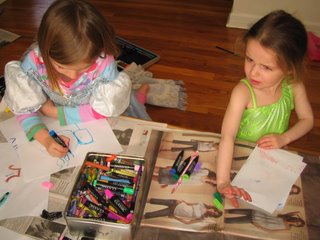 Notice the dress-up clothing. These girls are drawing and writing as part of their pretend play.
Notice the dress-up clothing. These girls are drawing and writing as part of their pretend play.One of the five year olds seemed reluctant to write at first when we all sat down for a writing time at the table. She answered my questions confidently, but referred to her writing only in terms of letter formation and did not seem very secure in her ability to write the alphabet. As the other children started writing and drawing and answering my questions, she observed and thought for a while, and then suddenly her demeanor brightened as she piped up, “Oh – I can write too. I’m a good writer, actually, because I can write numbers.” She started to draw and as I asked her about what she was drawing, she began to add details to her picture and tell me more about her family and their house that she was drawing. The more she talked, the more she drew, and the more she drew, the more details she thought of to tell me about and to add onto her picture. Before long, this reluctant writer had drawn several pages of pictures.
Authentic Writing
Subscribe to:
Posts (Atom)
